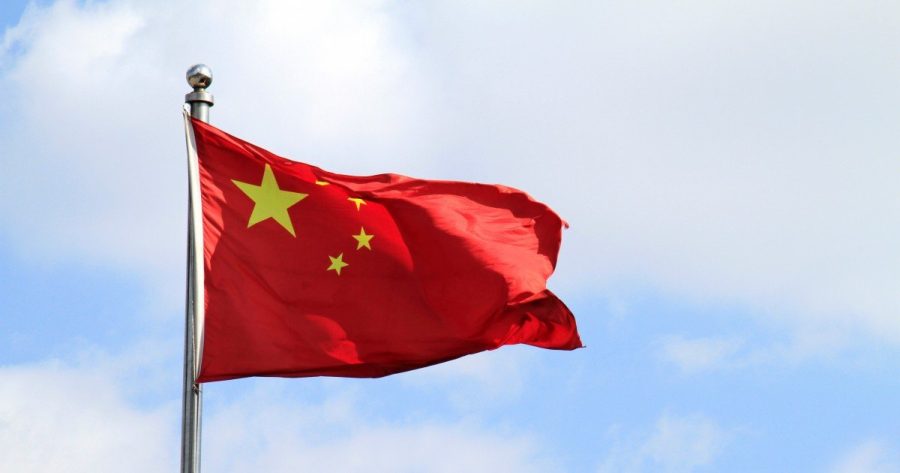Linnabary: China’s Emissions Are Out of Control
December 30, 2021
World leaders, climate scientists and activists recently gathered in Glasgow for the COP26 Conference to show solidarity in preventing and strategizing against climate change. The United States, for the first time since the Trump Administration, has a chance to restore itself as a leader in preventing climate change. The Trump Administration, despite lowering our emissions domestically, failed to become a global leader on this issue. We withdrew from the Paris Climate Accords, and the administration continually painted climate change as a non-issue.
Given our returning chance to lead, many hoped we would implore the world’s number one polluter, China, to lower their excessive emissions. Unfortunately, China made no meaningful commitments to change its emissions. But China must do its part to make significant progress against climate change.
Little Action From China
China is inarguably the world’s number one polluter, polluting more than the entire developed world combined. The U.S. accounts for 11% of global emissions, while China shoulders responsibility for 27% — more than double what the U.S. emits. Given this massive disparity, the U.S. and other global powerhouses should push for China to decarbonize now. However, our leaders would rather make efforts to only decarbonize locally while making little effort to decarbonize globally.
President Xi Jinping of China opted not to attend COP26. Instead, he sent a letter expressing concern over the climate issue, but his letter was as empty and insincere as his seat at the conference. The letter said a lot without saying much. In the letter, President Xi said China’s plans to address the crisis “will be rolled out, coupled with supporting measures.” But for years now, China’s climate plan has been vague, unclear and insufficient. China says it plans to max out its emissions into 2030, with no attempt to lower them until after that.
At the conference, China also committed to no longer financing the construction of coal power plants, which the country has done despite its carbon intensity. But China has tripled its emissions in the last three decades, and they still plan on growing their emissions. This demonstrates the opposite of commitment to tackling climate change.
But we know that the climate crisis isn’t knocking at the door — it’s breaking that door down.
China’s Role in Climate Change
Although China is on the other side of the world, the U.S. has felt the effects of its disproportionate emissions. In particular, Utah has experienced many damaging effects of climate change. We have seen an increase in droughts and wildfires, and a rise of three degrees Fahrenheit in average temperatures. Utahns’ health has suffered due to these increased temperatures. While Utah and the U.S. have made their own contributions to climate change, the effects of China’s excessive emissions undoubtedly play a role in global warming.
Given China’s false promises and commitments, we must ask how we can hold them accountable. A significant source of Chinese emissions comes from manufacturing, with the Chinese industrial sector alone comprising 24.1% of global emissions. Given this, many would say, “stop buying Chinese goods,” but that’s easier said than done.
The massive disparity between Chinese imports to the U.S. and U.S. exports to China demonstrates that we depend on China for much of our consumer goods. This disparity exists because China can produce goods at a much lower price than the U.S., translating to consumers wanting Chinese products more. Even I sometimes purchase Chinese goods over domestically-produced ones because of the price.
Carbon Embargos as a Solution
We have tried tariffs in the past, but those have only hurt consumers and haven’t sufficiently affected consumption patterns. Instead, we need a carbon embargo. The U.S. has made massive efforts to make our production process less carbon-intensive, while China hasn’t. This decarbonization has been part of why U.S. goods are more expensive, and as such, China should pay for that difference.
A carbon embargo would place a fee on goods imported to the U.S. based on the emissions involved in manufacturing that good. The difference between this and a tariff is that the fee is paid by China, not consumers, making the price of manufacturing goods go up in such a carbon-intensive way. In addition, given China’s dependence on the U.S. as a trading partner, they won’t stop trading with us.
One nation acting alone cannot solve climate change. As the Climate Leadership Council puts it, “A well-designed system of border carbon adjustments will enhance the competitiveness of American-based firms that are more energy-efficient than their foreign competitors, while preventing carbon leakage and free-riding by other nations.” China must start decarbonizing now — not later.










Sarah • Jan 11, 2022 at 9:26 pm
This has already been said more eloquently, but America likes stuff. China makes our stuff. Maybe if America bought less stuff, China wouldn’t make it.
Rory Weeks • Jan 11, 2022 at 5:56 pm
Hello,
It’s probable no one will see this, but even so, I feel that this should be pointed out: portraying the carbon emissions of China as “excessive” is a bad faith argument that ignores centuries of culpability for the climate crisis on the part of developed Western nations. Yes, it is true that in the past several years China’s CO2 emissions were approximately twice that of the United States, but just stating this fact with no additional analysis is somewhat misleading and deserves to be investigated further to get a more complete picture of each nation’s contribution to the climate crisis. Just for starters, you have conveniently neglected any mention of population. The population of China is 1.4 billion people compared to the 330 million who reside in the U.S. (4.2X greater!). If you take a look at CO2 emissions per capita, a rather different picture starts to emerge: in 2020, the U.S. per capita emissions sat at 14.24 tons, whereas China’s were a much lower 7.41 tons (data is readily available online for anyone to look at through ourworldindata.org). Overconsumption on the part of Americans is a real phenomenon and per capita emissions demonstrate one facet of that. It is us who have “excessive” emissions, not the Chinese (if you really want a quintessential example of excessive fossil fuel emissions, look no further than the Pentagon, which has a carbon footprint larger than many countries, e.g. Sweden, Denmark, and Portugal, and is the single largest consumer of petroleum on planet earth).
With regards to the responsibility to urgently act on climate, it should be noted that China has only been the world’s largest emitter since 2006. Prior to that date, for the past 100+ years the United States was the top global emitter, and for the record, while China is now 1st, we are 2nd, so let’s not pretend we’ve made any significant progress with our own climate-related promises, which are really just as “vague, unclear, and insufficient” as China’s. Looking at cumulative emissions since the Industrial Revolution makes this even more clear: throughout history the United States is by far the largest emitter of CO2, with nearly twice as many cumulative emissions as China (again, this data is easily accessible had you bothered to look it up). CO2 molecules have a lifetime of hundreds of years in the atmosphere, so those emissions are still up there and contributing to climate change through the absorption and reemission of longwave radiation. So, let’s be crystal clear here: the U.S. has contributed far more to the climate crisis to this point than China has, and may ever will. As such, we have no ground to stand on to try and push/force other countries to decarbonize when a) we are doing a pretty dismal job of that ourselves, b) we are the country most responsible for climate change, and c) to try and do so (and to even suggest doing so) really just shows that the twin specters of colonialism and imperialism are very much still with us today.
So, this obsession with China’s carbon emissions comes across as patently absurd in light of the hundreds of years of emissions that have accrued from the U.S. and other wealthy nations of the West. This piece takes what should be an extremely complex and nuanced discussion and boils it down into a “China’s emissions are out of control and must be curtailed” dog-whistle take, electing to ignore the historic and current responsibility of the United States, Canada, and Europe for the climate crisis and place the blame on the Chinese. To be clear, China is in part to blame, of course. I am no fan of China’s climate policies, but they should not really be portrayed as some massive problem towards stabilizing earth’s climate at +1.5 or 2 degrees (or whichever metric you prefer) when our own inaction is at least equally bad, and arguably much worse given the fact that we shoulder the biggest share of the blame. We should be endeavoring to transform our own country’s electrical grid and transition away from fossil fuels to reach net zero emissions, not proposing punitive measures on other nations to get them to reduce emissions while we sit by and do little to nothing of the sort. Such an argument as this piece presents comes off as being in incredibly bad faith and borderline sinophobic, and I am quite frankly surprised that the Chronicle allowed this to be published. At least look a little deeper into the available climate data before basing your whole argument on the last 15 or so years of a narrative centuries long, I mean, come on.
Cynthia • Jan 11, 2022 at 1:48 pm
If we look at emission by country from the start of the industrial revolution, which you should, then the US has contributed far more to climate change than China. Additionally, emissions produced by China because of US manufacturing should still be considered US emissions.
To try and blame Chinese people for the drought in Utah because they have produced more carbon than the US in the last decade while essentially ignoring the overwhelming majority impact of the US and the lack of local action to conserve water is not only misleading it’s also xenophobic. It would be more accurate to blame the US for rising sea levels and the impacts it will have on Pacific Island nations who have contributed almost nothing to climate change in comparison to the US but will be disproportionately affected.
Someone come embargo the US, we’re full of racists and pollution.
Source
https://www.statista.com/statistics/1007454/cumulative-co2-emissions-worldwide-by-country/